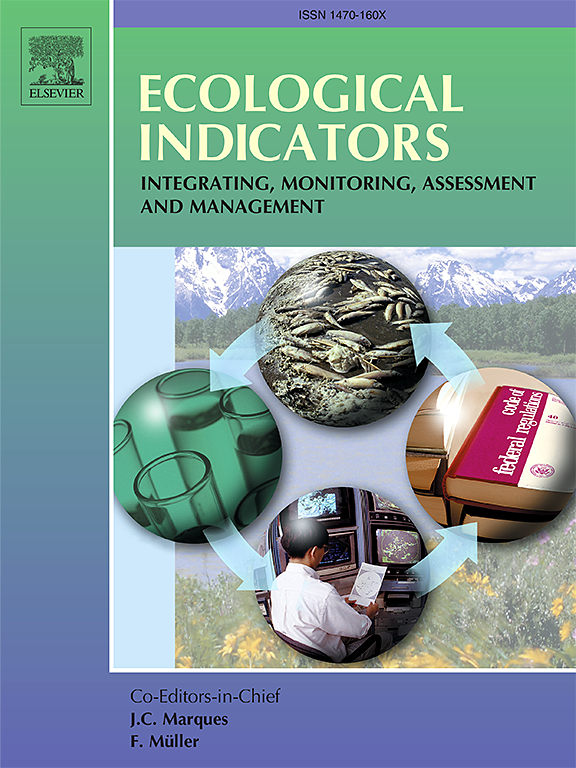Driving mechanisms of ecosystem services and their trade-offs and synergies in the transition zone between the Qinghai-Tibet Plateau and the Loess Plateau
Zhou, Jie , Yang, Jie , Tang, Zhuangsheng , Xue, Lingyu , Zhang, Wenliu , Zhang, Jing
2025-02-01 null null 171(卷), null(期), (null页)
The transitional zone between the Tibetan Plateau and the Loess Plateau features diverse ecological structures, with varied terrain and climate contributing to the high sensitivity and fragility of its ecosystems. Furthermore, the impact of human activities has made ecosystem services and their interrelations increasingly complex and dynamic. Therefore, studying ecosystem services and their driving factors, as well as implementing measures to mitigate or eliminate negative impacts, is of great significance for maintaining ecological stability and promoting sustainable development in this region. This study assessed five ecosystem services in the transitional zone of the Tibetan Plateau and Loess Plateau from 1990 to 2020. By combining multi-scale analyses (1 km, 5 km, and 10 km grids) with structural equation modeling, the study identified trade-offs, synergies, and the main driving factors among these ecosystem services. The results indicated that, with the exception of habitat quality (HQ), the other four services showed an increasing trend. soil conservation (SC), water yield (WY), habitat quality (HQ), and carbon storage (CS) demonstrated synergistic relationships, while net primary productivity (NPP) exhibited a trade-off relationship with WY and HQ and a synergistic relationship with SC and CS. Spatially, these services were not entirely aligned as either synergistic or competitive, revealing spatiotemporal heterogeneity. Additionally, consistent relationships were observed between pairs of services across scales, with similar correlation strengths across scales. The analysis of driving factors revealed that natural and social factors often exerted opposite influences on ecosystem services. Specifically, SC and CS were primarily driven by natural factors such as precipitation (Pre), temperature (Tem), and potential evapotranspiration (PET). In contrast, WY, NPP, and HQ were influenced by a combination of natural and social factors, including population density (Pop), Pre, and GDP. Additionally, variations in key driving factors and their effects across temporal and spatial scales demonstrated the spatiotemporal heterogeneity of primary drivers in ecosystem services. This study reveals the complexity of ecosystem services and their interrelationships from multiple perspectives, providing a scientific framework for ecosystem management in environmentally fragile regions.
相关推荐
- Mapping spatial heterogeneity of non-structural carbohydrates in Haloxylon ammodendron using remote sensing in extreme desert environments [2025-02-01]
- Estimation of winter wheat yield by assimilating MODIS LAI and VIC optimized soil moisture into the WOFOST model [2025-02-01]
- Impacts of groundwater depth and tree age on the non-structural carbohydrates of Haloxylon ammodendron [2025-02-01]
- Clarifying the impacts of climatic coupling on plastic-mulching potato production in the loess plateau of China [2025-02-01]
- Spatio-Temporal Differentiation and Driving Factors of County-Level Food Security in the Yellow River Basin: A Case Study of Ningxia, China [2025-02-01]



